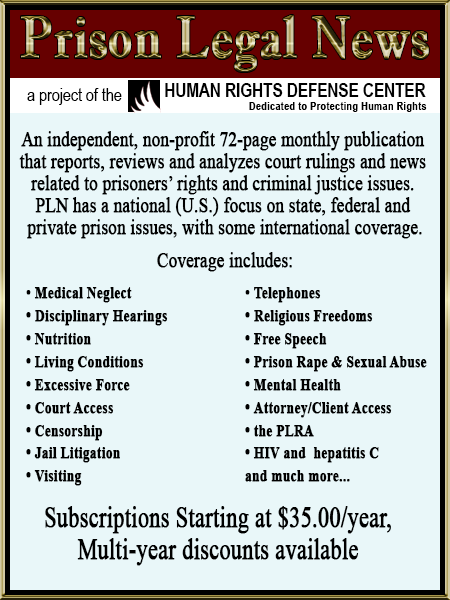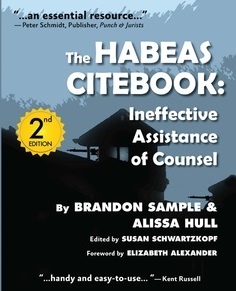SCOTUS Announces Courts May Not Consider § 3553(a)(2)(A)—Retribution—When Deciding Whether to Revoke a Term of Supervised Release
The Supreme Court of the United States held that U.S. District Courts may not consider 18 U.S.C. § 3553(a)(2)(A), retribution vis-à-vis defendant’s underlying criminal offense, when determining whether to revoke a term of supervised release because Congress’ decision to enumerate eight of the ten sentencing factors set forth in § 3553(a) but expressly omit § 3553(a)(2)(A) in the list of factors that may be considered in revoking a term of supervised release under § 3583(e) indicates Congress did not intend for courts to consider the two omitted sentencing factors, specifically including § 3553(a)(2)(A).
Background
In 2018, Edgardo Esteras pleaded guilty to conspiracy to distribute heroin, and the U.S. District Court for the Northern District of Ohio sentenced him to 12 months in prison followed by a six-year term of supervised release.
Three years into his term of supervised release, the District Court was notified that Esteras was arrested and charged with domestic violence, aggravated menacing, and criminal damaging. But the charges were eventually dropped at the request of the alleged victim.
Nevertheless, the District Court held a revocation hearing and concluded that Esteras violated the conditions of his supervised release. During the hearing, the court remarked that he was “no stranger to law violations and no stranger to federal court,” adding that his previous sentences had been “rather lenient.” The court revoked his supervised release and ordered his reimprisonment for a term of 24 months and three more years of supervised release afterward.
At that point, defense counsel objected, claiming that the District Court had impermissibly considered “the factor in Section 3553(a)(2)(A).” Counsel acknowledged that the Sixth Circuit permits District Courts to consider § 3553(a)(2)(A) when deciding whether to revoke a term of supervised release. See United States v. Lewis, 498 F.3d 393 (6th Cir. 2007). The District Court also acknowledged that part of its decision “certainly [was] the need for the sentence imposed, to promote respect for the law.”
The Sixth Circuit affirmed and offered two rationales for its position that District Courts may consider § 3553(a)(2)(A). First, § 3583(e) does not specifically limit the factors that courts may consider to “only” those enumerated, so there is no indication that Congress intended to displace the “considerable discretion” that courts generally have “over supervised-release decisions.” Second, interpreting § 3583(e) as prohibiting District Courts from considering § 3553(a)(2)(A) would not be workable because the considerations contained in that section tend to be “essentially redundant” with the ones permitted, meaning thinking “about the one requires the judge to think about the other.”
The circuits are split on this issue, so the Supreme Court granted certiorari to resolve the split.
Analysis
The Court began its analysis by discussing the federal sentencing framework. A District Court may impose a term of imprisonment, term of probation, or a fine. See § 3551(b). In deciding on an appropriate sentence, the court must consider the factors set forth in § 3553(a), such as “the nature and circumstances of the offense.”
The Court noted that § 3553(a)(2)(A) “captures the traditional heartland of criminal sentencing,” which requires courts to consider: “the need for the sentence imposed—(A) to reflect the seriousness of the offense, to promote respect for the law, and to provide just punishment for the offense; (B) to afford adequate deterrence to criminal conduct; (C) to protect the public from further crimes of the defendant; and (D) to provide the defendant with needed educational or vocational training, medical care, or other correctional treatment in the most effective manner.” These four considerations are commonly referred to as “retribution, deterrence, incapacitation, and rehabilitation” and are viewed as the “four purposes of sentencing generally.” Tapia v. United States, 564 U.S. 319 (2011).
During sentencing, a court that imposes a term of imprisonment may, and at times must, impose a post-imprisonment term of supervised release. § 3583(a). In determining whether to impose a term of supervised release and the conditions for such term, the court must “consider the factors set forth in section 3553(a)(1), (a)(2)(B), (a)(2)(C), (a)(2)(D), (a)(4), (a)(5), (a)(6), and (a)(7).” §3583(c). Notably, only two of the § 3553(a) factors are not included in this list: (1) § 3553(a)(2)(A), requiring the court to consider the need for the sentence imposed to “reflect the seriousness of the offense, to promote respect for the law, and to provide just punishment for the offense,” i.e., the retributive purposes of sentencing, and (2) § 3553(a)(3), requiring the court to consider “the kinds of sentences available….” The Court stated that when a court determines whether to revoke a defendant’s supervised release, “the very same subset of § 3553(a) factors—that is, all but two—applies.” § 3583(e)(3).
The Court noted that it is “self-evident” why § 3553(a)(3) is excluded. That is, when deciding whether to revoke a term of supervised release, there is no need to consider “the kinds of sentences available” because only supervised release is at issue. That leaves only § 3553(a)(2)(A), which is not similarly “self-evident” as to whether it should be considered when deciding whether to revoke a term of supervised release.
Turning to § 3553(a)(2)(A), the Court noted that § 3553(a)(2)(A) references the need for the sentence “to reflect the seriousness of the offense” as well as “provide just punishment for the offense.” In the context of revocation proceedings, the Court explained that “offense” refers to the underlying crime of conviction, not the violation of the supervised-release conditions that triggered the revocation hearing. It stated that the opening provision of the sentencing chapter of Title 18 “clearly uses ‘offense’ to refer to a criminal conviction.” See § 3551(a). Furthermore, conduct that violates the terms of supervised release does not have to be criminal. Johnson v. United States, 529 U.S. 694 (2000); see, e.g., § 3583(g)(3) (mandating revocation when a defendant fails to comply with drug testing imposed as a condition of release). Finally, other provisions in § 3583 consistently use the term “offense” to mean the defendant’s original crime of conviction and use the term “violation” to refer to the violation that triggers revocation, the Court observed.
Against that background, the Court stated that the question is, when deciding whether to revoke a defendant’s term of supervised release, “may a district court account for the need to exact retribution for the defendant’s underlying crime?” The Court concluded that District Courts may not.
The Court explained that its conclusion is based on the canon of statutory interpretation: expressio unius est exclusion alterius, meaning “expressing one item of [an] associated group or series excludes another left unmentioned.” Chevron U.S.A. Inc. v. Echazabal, 536 U.S. 73 (2002). Section 3553(a) sets forth 10 factors for District Courts to consider in making sentencing decisions, but § 3583(e) includes only eight of those factors for District Courts to consider when deciding whether to revoke a term of supervised release. The Court reasoned that the “natural implication is that Congress did not intend for courts to consider the other two factors, § 3553(a)(2)(A) and § 3553(a)(3).
Additionally, the statutory structure supports this conclusion because all other provisions that deal with the imposition and revocation of sentences direct courts to consider all of the § 3553(a) factors. For example, when deciding whether to revoke a term of probation, courts are instructed to consider all the factors set forth in § 3553(a). Notably, it is only for decisions regarding the revocation of a term of supervised release under § 3583(e) that § 3553(a)(2)(A) is conspicuously omitted, according to the Court.
Finally, the Court stated that its conclusion is supported by precedent, explaining the Supreme Court has “twice interpreted the omission of § 3553(a)(2)(A) from the provision governing the imposition of supervised release (§ 3583(c)) to mean that district courts may not consider that factor when imposing supervised release.” See Tapia v. United States, 564 U.S. 319 (2011); Concepcion v. United States, 597 U.S. 481 (2022). The Court explained that although Tapia and Concepcion deal with the imposition of supervised release, “the same reasoning applies to the revocation of supervised release under § 3583(e): The omission of § 3553(a)(2)(A) from the list of factors means that courts may not consider it.”
Conclusion
Thus, the Court held that District Courts may not consider § 3553(a)(2)(A) when deciding whether to revoke a term of supervised release.
Accordingly, the Court vacated the judgment of the Sixth Circuit and remanded the case for further proceedings consistent with its opinion. See: Esteras v. United States, 2025 U.S. LEXIS 2382 (2025).
As a digital subscriber to Criminal Legal News, you can access full text and downloads for this and other premium content.
Already a subscriber? Login
Related legal case
Esteras v. United States
| Year | 2025 |
|---|---|
| Cite | 2025 U.S. LEXIS 2382 (2025) |
| Level | Supreme Court |





